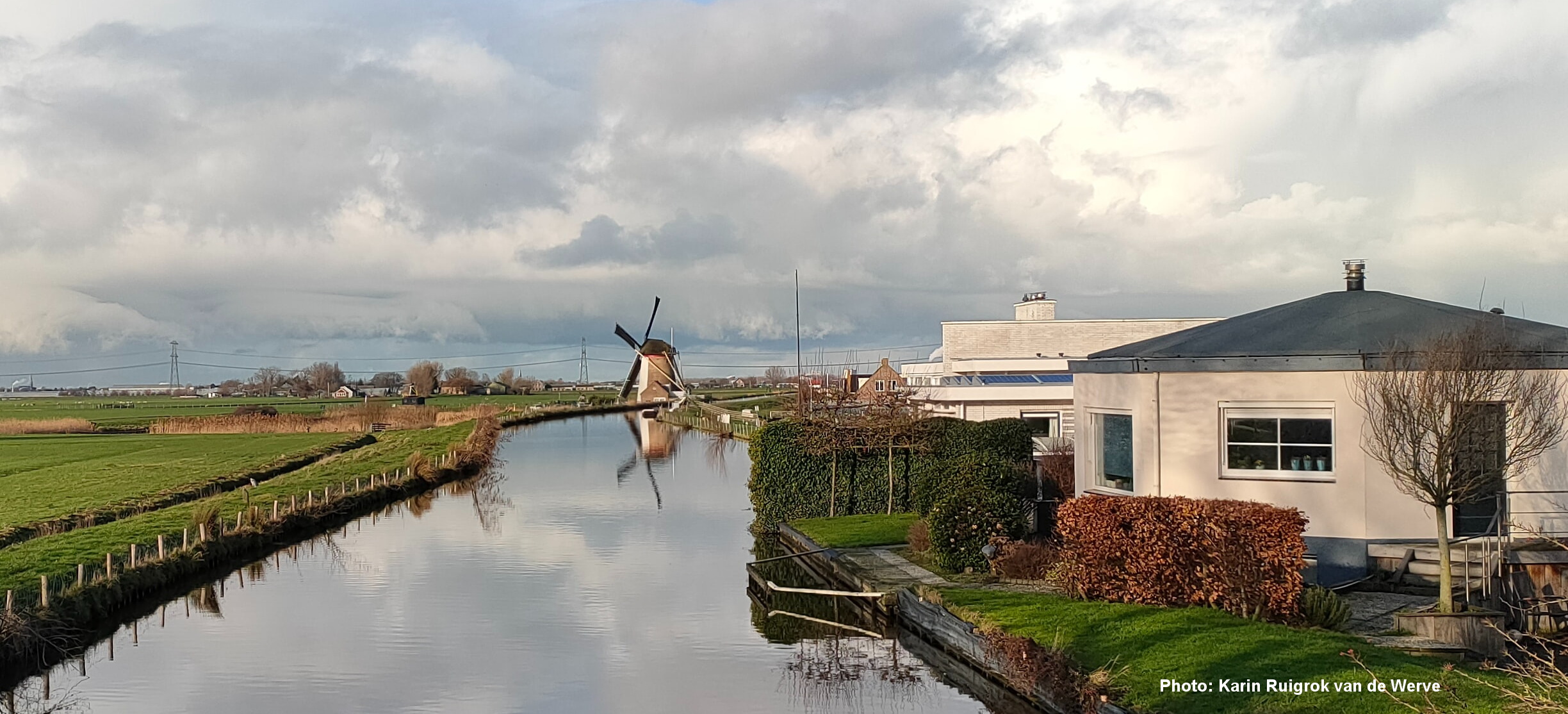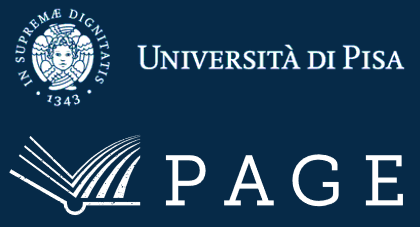Analysis of the role of academic institutions in supporting innovation in agri-food SMEs in a cross-border context |Marina Knickel
Written by Marina Knickel
A growing body of literature calls for an extended role of academic institutions and scientists when it comes to sustainability transformations: from mere knowledge generation, technology transfer and provision of evidence to active engagement in societal processes and decision-making [1–4]. Recent evidence from the 5th SCAR report ‘Resilience and Transformation. Natural Resources and Food Systems’ [5] and the key messages from the 4th International Conference on Global Food Security echo these ideas.
Transdisciplinary research, in particular, is more and more recognised as potentially very impactful [2–4, 6]. It can generally be defined as bringing a range of disciplinary knowledge together with the practitioners’ experiences to address complex real-world societally relevant problems with concrete and sustainable solutions in a particular context [3, 7–9]. Due to the nature of this process, transdisciplinary research has the potential to be particularly effective in influencing decisions in policy and practice. It is telling too that recently the European Commission has started to increasingly fund transdisciplinary approaches in so-called multi-actor research projects as well as in a range of research and innovation partnerships – all of this with the aim to enhance research impact.
A question that is becoming more important against this background is how to design transdisciplinary research to ensure its impact from the start [10]. As part of my PhD and together with colleagues from Wageningen University, I had the opportunity to empirically examine the role of academic institutions and innovation brokers in the Interreg project Food Pro-tec-ts. The study area is the Dutch-German cross-border region Euregio Rhein-Waal. Our analysis is based on 19 semi-structured interviews focussed on identifying differences between two border regions in the way academic institutions and innovation brokers support innovation in agri-food SMEs. Our basic idea is that the complementary strengths of the two regional innovation systems can be used more strategically. In our article, we argue that the first step in such a strategy would be acknowledging differences in innovation systems and processes related to economic, institutional and social structures, knowledge bases, political visions, and cultural identities to eventually valorise them [11, 12]. Kraeger et al. (2010) call this basic idea “combin[ing] the best of different worlds” [13]. In our analysis, we refer to hybridisation when describing potential synergies. The concept of hybridisation is not new, however, it had not been applied yet in innovation studies, or related to a cross-border innovation space.
Both academic institutions and innovation brokers have increasingly important roles in catalysing innovation processes [14, 15]. Academic institutions can in this sense take on a mission of “transformative space makers” where they simultaneously act as knowledge providers and as facilitators [16, 17]. The emergence of the Triple Helix concept in The Netherlands and the Third Mission concept in Germany [14] reflect this basic idea. Academic institutions and innovation brokers are also the ones who can effectively connect partners across borders. Due to the differences in mentality, business practices and language barriers such interactions do not naturally emerge in a cross-border context [11, 18].
Our findings pointed to different kinds of academia-business relations in the two regions: in the German region, there tends to be a distance between the two ‘realms’ as SMEs only get in touch with academia directly for short-term and targeted inputs required for particular innovations. In the Dutch region, a more strategic continuous cooperation is prevalent and facilitated by innovation brokers. Innovation brokers too were generally found to function differently in the two regions. In the Dutch region, they are often separate and independent organisations facilitating innovation-oriented cooperation, while direct cooperation between SMEs and academic institutions is limited. This kind of innovation brokers tends to be less present in the German region where knowledge or technology transfer offices play a greater role. At the same time, membership in professional associations and networks is common in Germany providing SMEs with direct access to resources, knowledge and potential partners. We argue that regional innovation actors in the Dutch region could learn from German partners about the potentially important mediating role of professional associations at the interfaces of business (and economic) development, academic institutions and policy. At the same time, innovation brokers in the German region could still learn how to connect institutions and actors with similar interests and complementary competencies more strategically, foster cooperation and stimulate knowledge exchange.
Overall, only a few academic institutions and innovation brokers are systematically engaged in cross-border cooperation related to agri-food innovation. The same applies to professional associations. Their business networks are particularly important for SMEs, but they also tend to stop at the border. Both, academic institutions and innovation brokers, can foster more intensive academia-business exchanges across the border and forge new partnerships. They can, for example, organise joint research initiatives, thematic matchmaking events for SMEs and workshops to exchange experiences. Other examples include the merging of knowledge repositories and establishment of a cross-border database of research and business contacts. Innovation brokers can take on ambassador functions and inform about differences in business practices and cultures.
One main conclusion is that differences in economic structures, institutional set-ups, visions and identities inherent in cross-border spaces should not only be seen as hindrances, but also as an opportunity. We highlight that these complementary strengths represent an untapped potential for economic and social progress on both sides of the border if strategically utilised by regional actors. We believe that the findings of our study can be particularly useful for those involved in cross-border cooperation projects and the related governing institutions such as Interreg offices, regional and national governments, as well as knowledge providers like academic and research institutions.
This blog post is based on the recent joint publication Strengthening the Role of Academic Institutions and Innovation Brokers in Agri-Food Innovation: Towards Hybridisation in Cross-Border Cooperation with colleagues from Wageningen University, HELSUS—Helsinki Institute of Sustainability Science (University of Helsinki) and the University of Pisa accomplished as part of the Interreg project Food Pro-tec-ts.
References
[1] Funtowicz, S. O.; Ravetz, J. R. Science for the Post-Normal Age. Futures, 1993, 25 (7), 739–755. https://doi.org/10.1016/0016-3287(93)90022-L.
[2] Hirsch Hadorn, G.; Bradley, D.; Pohl, C.; Rist, S.; Wiesmann, U. Implications of Transdisciplinarity for Sustainability Research. Ecol. Econ., 2006, 60 (1), 119–128. https://doi.org/10.1016/J.ECOLECON.2005.12.002.
[3] Lang, D. J.; Wiek, A.; Bergmann, M.; Stauffacher, M.; Martens, P.; Moll, P.; Swilling, M.; Thomas, C. J. Transdisciplinary Research in Sustainability Science: Practice, Principles, and Challenges. Sustain. Sci., 2012, 7 (S1), 25–43. https://doi.org/10.1007/s11625-011-0149-x.
[4] Takeuchi, K. The Ideal Form of Transdisciplinary Research as Seen from the Perspective of Sustainability Science, Considering the Future Development of IATSS. IATSS Res., 2014, 38 (1), 2–6. https://doi.org/10.1016/j.iatssr.2014.05.001.
[5] The 5th SCAR Foresight Exercise Expert Group. Resilience and Transformation. Natural Resources and Food Systems: Transitions towards a “safe and Just” Operating Space; Luxembourg, 2020. https://doi.org/10.2777/025150.
[6] Fam, D.; Palmer, J.; Riedy, C.; Mitchell, C. Transdisciplinary Research and Practice for Sustainability Outcomes, 1st editio.; Fam, D., Palmer, J., Riedy, C., Mitchell, C., Eds.; Routledge: Abingdon, Oxon ; New York, NY : Routledge, 2017., 2017.
[7] Scholz, R. W.; Steiner, G. The Real Type and Ideal Type of Transdisciplinary Processes: Part I—Theoretical Foundations. Sustain. Sci., 2015, 10 (4), 527–544. https://doi.org/10.1007/s11625-015-0326-4.
[8] Wickson, F.; Carew, A. . L.; Russell, A. W. W. Transdisciplinary Research: Characteristics, Quandaries and Quality. Futures, 2006, 38 (9), 1046–1059. https://doi.org/10.1016/j.futures.2006.02.011.
[9] Hadorn, G. H.; Pohl, C.; Hoffmann-Riem, H.; Biber-Klemm, S.; Wiesmann, U.; Grossenbacher-Mansuy, W.; Zemp, E.; Joye, D.; Hadorn, G. H., Pohl, C., Hoffmann-Riem, H., Biber-Klemm, S., Wiesmann, U., Grossenbacher-Mansuy, W., … Joye, D. Handbook of Transdisciplinary Research; Hadorn, G. H., Hoffmann-Riem, H., Biber-Klemm, S., Grossenbacher-Mansuy, W., Joye, D., Pohl, C., Wiesmann, U., Zemp, E., Eds.; Springer Netherlands: Dordrecht, 2008. https://doi.org/10.1007/978-1-4020-6699-3.
[10] Carew, A. L.; Wickson, F. The TD Wheel: A Heuristic to Shape, Support and Evaluate Transdisciplinary Research. Futures, 2010, 42 (10), 1146–1155. https://doi.org/10.1016/j.futures.2010.04.025.
[11] Lundquist, K. J.; Trippl, M. Distance, Proximity and Types of Cross-Border Innovation Systems: A Conceptual Analysis. Reg. Stud., 2013, 47 (3), 450–460. https://doi.org/10.1080/00343404.2011.560933.
[12] Sohn, C. Modelling Cross-Border Integration: The Role of Borders as a Resource. Geopolitics, 2014, 19 (3), 587–608. https://doi.org/10.1080/14650045.2014.913029.
[13] Kraeger, P.; Pospíšil, M.; Howard, D. B.; Freise, M.; Sacco, J.; Chan, K.; Pospíšil, M.; Freise, M.; Lee, S.-E.; Howard, D. B.; et al. Hybridity/Hybridization. International Encyclopedia of Civil Society; Springer US, 2010; pp 839–842. https://doi.org/10.1007/978-0-387-93996-4_34.
[14] Nakwa, K.; Zawdie, G. The “third Mission” and “Triple Helix Mission” of Universities as Evolutionary Processes in the Development of the Network of Knowledge Production: Reflections on SME Experiences in Thailand. Sci. Public Policy, 2016, 43 (5), 622–629. https://doi.org/10.1093/scipol/scw030.
[15] Batterink, M. H.; Wubben, E. F. M.; Klerkx, L.; Omta, S. W. F. (Onno). Orchestrating Innovation Networks: The Case of Innovation Brokers in the Agri-Food Sector. Entrep. Reg. Dev., 2010, 22 (1), 47–76. https://doi.org/10.1080/08985620903220512.
[16] Pereira, L.; Frantzeskaki, N.; Hebinck, A.; Charli-Joseph, L.; Drimie, S.; Dyer, M.; Eakin, H.; Galafassi, D.; Karpouzoglou, T.; Marshall, F.; et al. Transformative Spaces in the Making: Key Lessons from Nine Cases in the Global South. Sustain. Sci., 2020, 15 (1), 161–178. https://doi.org/10.1007/s11625-019-00749-x.
[17] Fazey, I.; Schäpke, N.; Caniglia, G.; Patterson, J.; Hultman, J.; van Mierlo, B.; Säwe, F.; Wiek, A.; Wittmayer, J.; Aldunce, P.; et al. Ten Essentials for Action-Oriented and Second Order Energy Transitions, Transformations and Climate Change Research. Energy Res. Soc. Sci., 2018, 40, 54–70. https://doi.org/10.1016/j.erss.2017.11.026.
[18] van den Broek, J. Agency and Institutions in the Construction of Cross-Border Innovation Spaces, 2018.


